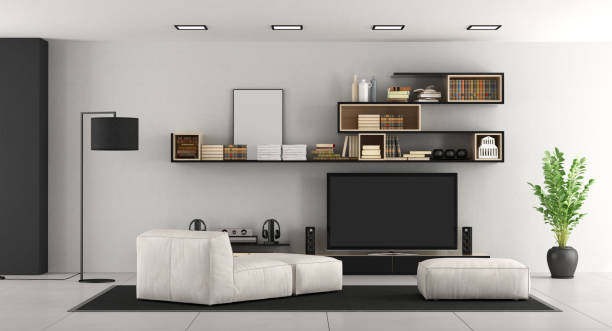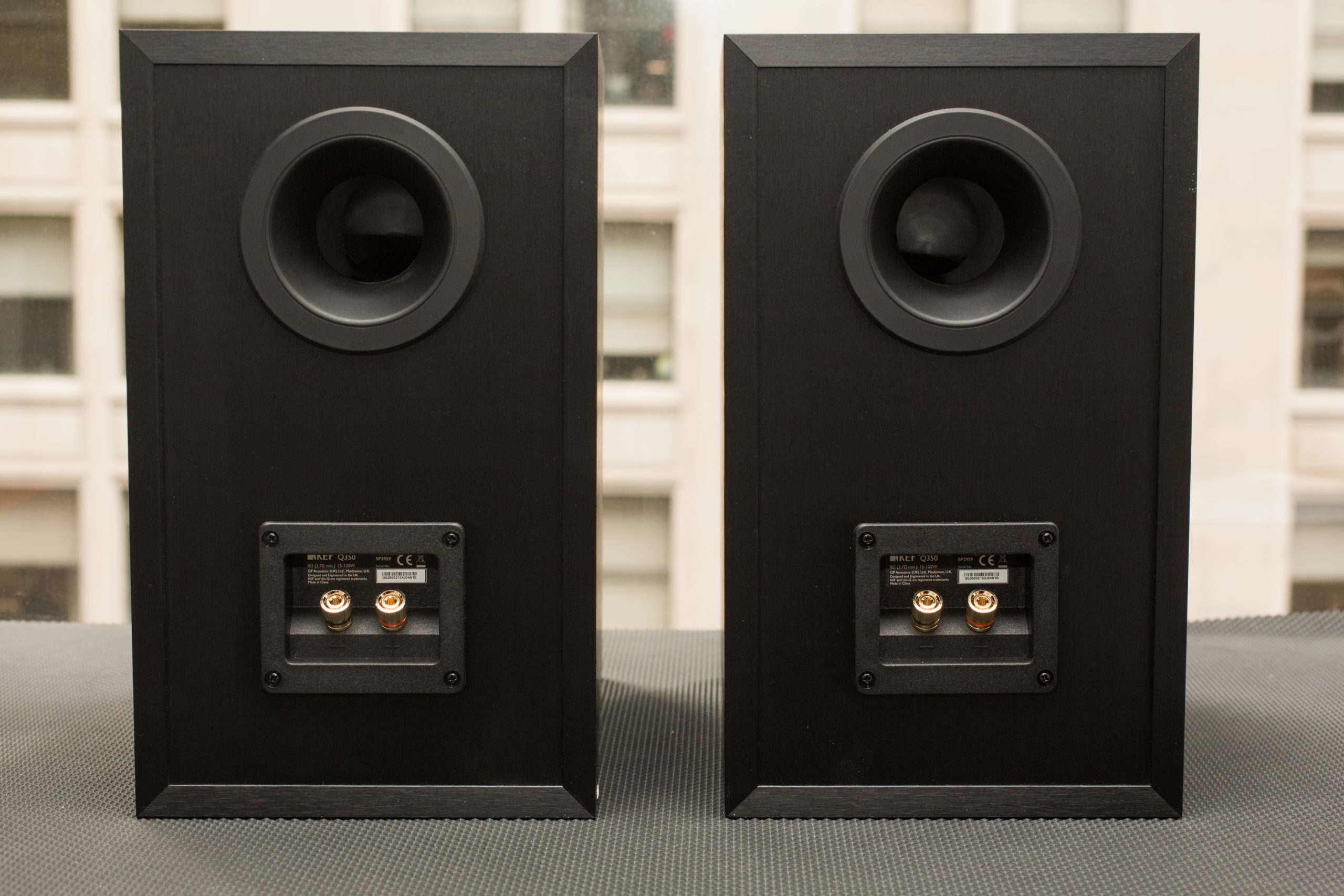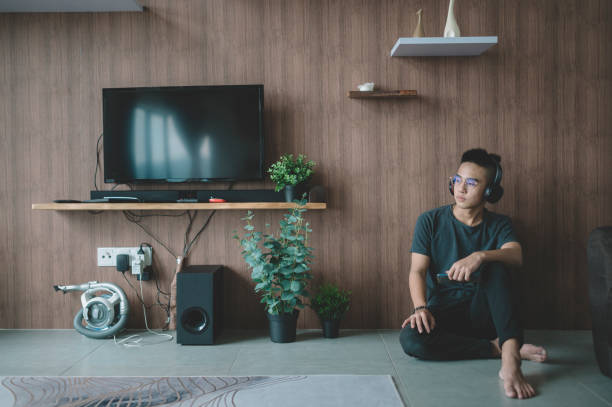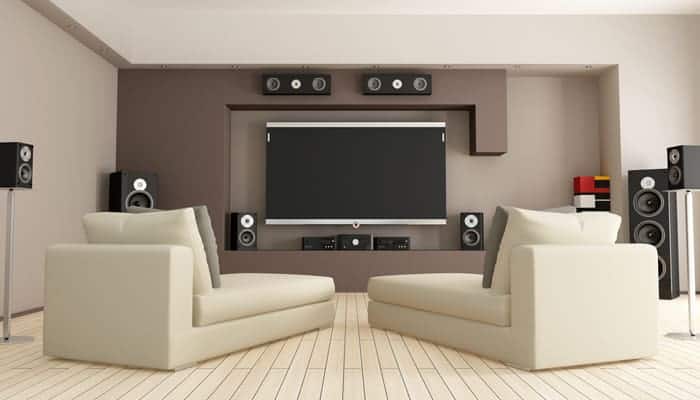Table of Contents
Review of the KEF Q150 Bookshelf Speakers
Bookshelf speakers are a convenient choice for audiophiles who want quality speakers that don’t take up much space. They can be integrated into a home theatre system, as well as making up part of a small, stereo system. It’s important when purchasing this product that a focus is placed on sound quality above all else.
There are many bookshelf speakers on the market – available in a wide range of price brackets – and it can be difficult to decide what set are the best. This is why it’s important to focus on brands that are experts at creating these speakers, which is certainly what KEF is. Its Q150 model is a high-end product that isn’t the cheapest around, but if you’re willing to pay more, then you’ll be assured quality from this excellent product. Let’s have a look at it more closely.
KEF’s Q Series was first created back in 1991. Since then, KEF has constantly improved the speakers that are part of the series, and the Q150 is a recent product that includes a cutting-edge design. It includes Uni-Q Driver Array, which is 5.25”. These drivers deliver crisp, detailed audio that performs well across the whole sound spectrum. The innovative design means that the tweeter is housed inside the cone, which translates into accurate sound that has depth, making it ideal for both music and movies.
Sound Quality

Let’s focus on the sound quality for a moment. One feature that is often lacking with bookshelf speakers is powerful bass. This is why many people turn to subwoofers to enhance the low end. That’s not necessary with KEF’s Q150 speakers because of a combination of its Auxiliary Bass Radiator. This component ensures that the bass isn’t just powerful but that it also remains detailed and free from distortion even when the speakers are turned up loud. They also have the suspension at the rear of the setup, which contributes further to the exceptional bass quality.
The KEF Q150 provides you with an impressive frequency range of between 51Hz and 28kHz, which is far greater than standard bookshelf speakers. It’s a two-way system, which means that it has two drivers inside it, which we’ve already mentioned have been placed in optimal positions for better sound. Besides the 5.25” aluminum Uni-Q driver, there’s also a vented, 1”, aluminum dome driver.
Design & Dimensions
A good set of bookshelf speakers requires more than just high-grade drivers. It’s also important that they have enclosures that help to enhance the sound quality and reduce the chance of distortion, rumbling, or other unwanted sounds. Available with either a satin black or satin white finish, the Q150’s gorgeous, sleek enclosures tick the right boxes. They’re made from MDF, which is standard for many bookshelf speakers. This helps to keep them relatively light for their size, weighing just under 25lbs combined. They are slightly larger than many bookshelf speakers. Their dimensions are 11.92” by 7.08” by 10.944”.
The lack of grilles as standard is a notable absence, although they are available for a reasonable price. KEF sometimes offers them as a free extra, but it depends on the deals they have on at the time. The grilles fit onto the speakers through magnets. Even without the grilles, the Q150 looks good, but for many, speakers can have an unfinished appearance without the grilles.
Installation
You have a few options with these speakers in terms of placement. They can be mounted on stands for an optimal, ear-level height for when you’re sitting down listening to music through them or for watching films. Of course, you can also place them on a cabinet or shelf, but the sound quality might be slightly harmed. The difference will be negligible so it won’t be noticed by some, but we can recommend purchasing stands if you want the very best listening experience.
Specifications
For true audiophiles like us then it’s always good to know all the key specs, so we’ll give you some now. They have a sensitivity rating of 86dB. The maximum output is 108dB. Nominal impedance is 8 ohms. You’ll also need an amp that offers 10w to 100w. They offer you a crossover frequency of 2.5kHz.
Now that we’ve got the numbers out of the way, let’s think about if these speakers are worth paying for, and if any alternatives should be considered instead.
Firstly, let’s consider the question of cost. They are, undoubtedly, more expensive than bog-standard bookshelf speakers. If you’re simply looking for a bargain, then the KEF Q150 won’t be for you. If, however, you’re passionate about sound, and you want an immersive listening experience, then these speakers are a seriously good choice. They set you back a little more, but they’re designed to last, so you won’t need to replace them anytime soon. The sound quality is flawless, and they produce a huge amount of power for such little speakers. The higher price tag also translates into sleek, classy looks that won’t distract inside your home. They’re subtle but it’s also clear that they are quality products. If you spend less, then you’ll likely end up with cheaper-looking speakers that can diminish the décor inside your home.
Features
Fans of KEF will likely be aware that it also offers slightly larger speakers in the Q series. These are the KEF Q350. You might be wondering what the differences between these speakers are. Despite both sharing a 1” tweeter, the Q350 has a larger woofer that’s 6.5”. The bigger driver allows for a larger maximum output of 110dB, as opposed to the 108dB that the Q150 gives you. The frequency range is also different, with the Q350 offering a range between 63Hz and 28kHz.
The Q350 can also be powered by a larger amp with the maximum now being 120W, but it also can’t handle smaller amps and the lowest output you’ll need will be 15W. The sizes are different too. The Q350 has dimensions of 14.09” by 8.26” by 12.04”.
Size
 This might seem like a lot of numbers without giving you a clear sense of what the true difference is between the two sets of speakers. In short, the Q350 is simply a larger model of the Q150. This means that it is slightly more powerful, can handle a larger amp, and is slightly bigger. But it’s also more expensive too. Is it worth paying extra for? It will depend on your requirements, but we think the Q150 will satisfy most people’s needs.
This might seem like a lot of numbers without giving you a clear sense of what the true difference is between the two sets of speakers. In short, the Q350 is simply a larger model of the Q150. This means that it is slightly more powerful, can handle a larger amp, and is slightly bigger. But it’s also more expensive too. Is it worth paying extra for? It will depend on your requirements, but we think the Q150 will satisfy most people’s needs.
When selecting speakers, it’s always important to consider the size of the room you’ll be placing them in. Of course, larger rooms require larger speakers. You also need to consider where you’ll be placing the speakers, as this will be integral for the best listening experience. Both the Q150 and Q350 are excellent options for a home sound system that’s compact. The Q350 has a larger woofer, which means bigger bass and more power, but that’s only worthwhile if you’re placing the speakers in a larger room. We recommend that you only choose the more expensive model if you’ll be placing the speakers in a spacious room that requires more power from the speakers.
 Another important factor to consider when purchasing these speakers is that they’re passive. What does this mean? Basically, they will need an amplifier to function. That’s a further cost consideration that has to be kept in mind if you’ve not already got an amp. You might also wish to supplement the bass by adding a dedicated subwoofer into the system. Once again, this can add up. We need to return to the question of budget and requirements. If you’re looking to build a compact sound system that can be used for music, movies, and gaming, which will also last you a long time, continuing to deliver exceptional sound quality for years to come. Then, yes, go for these speakers. If you’re looking to get a cheap set of bookshelf speakers for rare use, then maybe you’d be better off with a budget alternative like the 3020i speakers that Q Acoustics sells for a third of the price of the Q150. Remember, you’ll pay less but you’ll get lower quality audio as a result.
Another important factor to consider when purchasing these speakers is that they’re passive. What does this mean? Basically, they will need an amplifier to function. That’s a further cost consideration that has to be kept in mind if you’ve not already got an amp. You might also wish to supplement the bass by adding a dedicated subwoofer into the system. Once again, this can add up. We need to return to the question of budget and requirements. If you’re looking to build a compact sound system that can be used for music, movies, and gaming, which will also last you a long time, continuing to deliver exceptional sound quality for years to come. Then, yes, go for these speakers. If you’re looking to get a cheap set of bookshelf speakers for rare use, then maybe you’d be better off with a budget alternative like the 3020i speakers that Q Acoustics sells for a third of the price of the Q150. Remember, you’ll pay less but you’ll get lower quality audio as a result.
Overall, KEF’s Q150 is up there with the best on the market in its price bracket. It delivers stunning sound quality across a broad frequency range. Despite their small size, they’re powerful on the low end and they offer a lot of volume too. The sleek design and satin finish give them understated, yet eye-catching looks that will look great in most homes. There is very little that you can fault these speakers, other than perhaps their price which will be out of some people’s budgets. If you’re willing to spend a bit extra, however, then we can highly recommend investing in these speakers. You’ll notice the difference in terms of sound, and you certainly won’t regret buying them.
Summary
KEF’s Q150 speakers feature a two-way system. It is composed of a 1” tweeter and a 5.25” Uni-Q driver array, which is located in the center of the speaker cabinet. These speakers deliver stunning sound quality across a wide frequency range. They require an amplifier with an output between 10W and 100W.
The KEF Q150 is at the larger end of the size spectrum for bookshelf speakers. They’ve got dimensions of 11.92” by 7.08” by 10.944 and they each weigh 12.3lbs. They feature MDF enclosures with a vinyl coating, and they can be bought in white, black, and walnut finishes.
Pros:
+ Incredible sound quality thanks to the 5.25” Uni-Q driver array
+ Innovative design by an award-winning company that’s adored by audiophiles
+ Compact size but big power
+ Gorgeous looks
+ Reasonable price for such a quality product
Cons:
- Despite the price being low for the quality the Q150 delivers, it might be out of some people’s budgets
Why We Like It:
These bookshelf speakers are made by one of the most respected companies in the audio world. The quality is evident in everything from looks to durability. But it is the exceptional sound that these speakers deliver that we rate as its standout feature. If you’re willing to spend the money to buy these excellent speakers then you won’t be disappointed, in our opinion.
If you liked the article, please leave your feedback.

